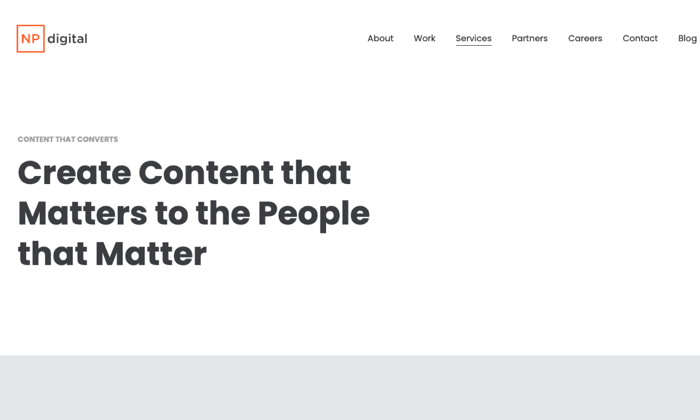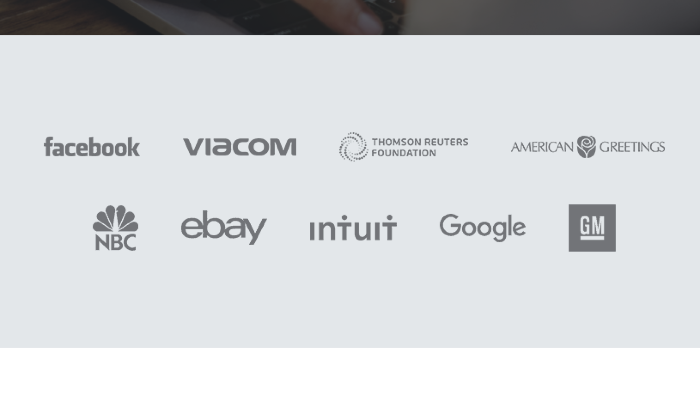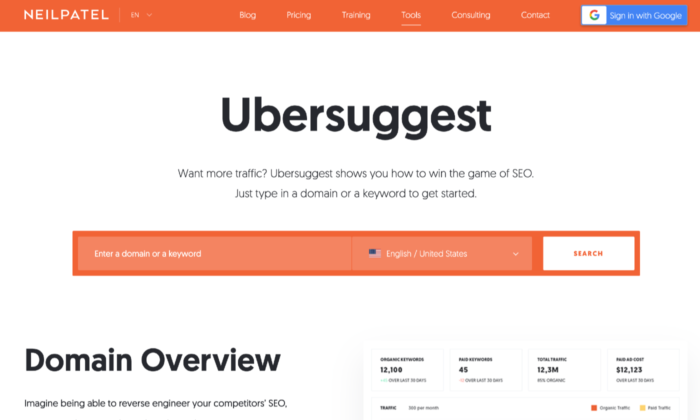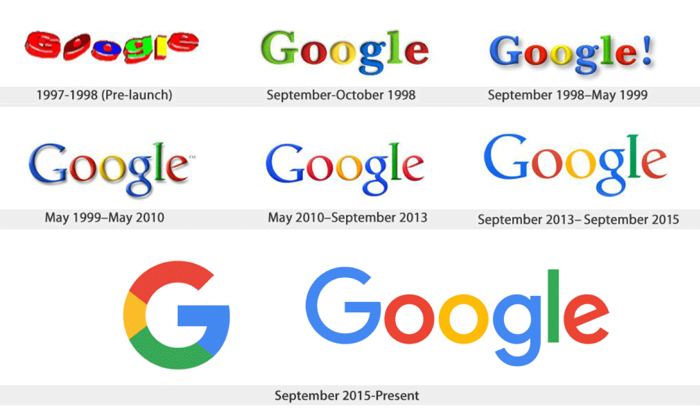
Do you need a creative agency or a marketing agency?
Look at the most successful companies today, and you’ll see the magic of both agency types at play.
Take Apple for example.
Apple’s marketing believes that “design and utility are just two of the reasons behind Apple’s success and certainly give it a competitive advantage.”
But drill down to Apple and its individual products’ success in the market spaces they compete in, and you’ll see that design alone doesn’t do the magic.
Marketing is just as important.
Apple drives growth with a marketing mix that does an excellent job to create raving fans even before product launches. And the overall sales it commands from its products is a direct result of the company’s marketing strategies.
In other words, to drive and sustain its growth, Apple uses creative agencies. But before their product launches, they leverage the expertise of marketing agencies.
This is the difference between a creative agency and a marketing agency.
What is a creative agency?
According to Column Five Media:
“A creative agency is a term for an agency that offers a variety of services that fall under the umbrella of marketing and advertising. Basically, if you need any type of creative strategy, work, or promotion, they can help you get it done.”
Column Five Media is a creative agency that has worked with Intuit, eBay, Google, Facebook, and dozens of other global brands.
Take a second to look at the definition of a creative agency by Column Five Media, a creative agency, and what does it reveal to you?
It clearly shows that even a wildly-experienced creative agency admits that its services, or any creative agency’s services, fall under the umbrella of marketing and advertising.
This definition should tell you something:
A creative agency helps to illuminate the advertising and marketing strategy execution of a company through appealing designs and other forms of creative work.
What is a Marketing Agency?
Like Column Five Media, my agency, Neil Patel Digital, has also worked with global brands such as Google, eBay, Intuit, Facebook, and dozens of others:

Here’s how I define a marketing agency:
“A marketing agency is a business that researches, strategizes, brands, and promotes a company’s products or services. Ultimately, marketing agencies partner with a company to develop, manage, and execute its marketing strategy to achieve defined business goals.”
As you saw in Apple’s example, design and utility (mostly brought to live by creative agencies) play an essential role in making products more appealing to users.
But the identification of those users, understanding what design choices will appeal to them, the messaging that’ll resonate with them, how, where, and when to reach them for the most impact comes first.
That’s why I say that marketing (mostly achieved with a marketing agency) is what engineers and sustains a company’s growth.
Hence, while creative agencies help to illuminate marketing ideas, marketing agencies strategize, create, and deliver the right content to the right people:

With their defining distinctions established, what are the various other differences between a creative agency and a marketing agency?
4 Differences between a Creative agency and marketing agency
As I said at the beginning of this article, the difference between these agency types boil down to very fine details.
Yet the need to know them is paramount, as it helps you to avoid judging a fish by its ability to climb a tree.
To guide you, I’ll distinguish both by pairing the related services these agency types can help you with when looking to grow your business.
Difference #1: Market research vs user research
Market research is a core business function.
Through market research, you can validate a business opportunity, examine the economic forces at play by investigating key industry trends and the competition, and get an idea of your potential market size.
But the main goal of market research isn’t to give you a solid foundation of the above alone.
Most importantly, it is to relate the findings from the research to your business case, ensuring that you get a firm grasp of how and where to position your company for growth.
By using market research to determine “how” to position your business, an agency identifies measures to differentiate your brand from competitors. It also allows them to identify “where” that positioning should happen – something that comes from knowing your prospective customers’ demographics.
Marketing agencies excel more doing this type of high-level market research.
Not only are they the ones who usually have market analysts working in-house, they’re also the ones who go on to develop tools that enable this kind of market research.
For example, the need to conduct SEO research and help people understand their market and competition better is part of what led me to develop Ubersuggest:

However, although some marketing agencies have in-house user researchers, creative agencies shine the most in the area of user research.
Market research helps to determine the how and where of your brand.
But to know why people would care, you must appeal to their interests and address their pain points the moment they spot your brand collaterals, most times without saying a single word.
Achieving this feat boils down to creating user-focused visuals and design assets that appeal to people’s interests or address their pain points, otherwise called psychographics.
User-focused design is the core of creative agencies.
To excel at doing this, they always conduct user research to determine the psychographics of prospective customers, even after market research has identified their demographics.
This explains why you’ll find UX researchers and UI/UX designers leading the lines for creative agencies.
Difference #2: Long-term branding vs specific targeting
Have you noticed something about most global brands?
They hardly change their core branding.
Yes, they may evolve into trendy visuals as most often do, but the brand fundamentals rarely change entirely.
Take Google, for example.
The company’s visual identity and logo has evolved tremendously from 1997 to 2015, but its fundamental brand colors, red, blue, yellow, and green remains:

The reason for this is that branding, usually executed by creative agencies, takes a long-term approach. It involves creating design assets and visuals to depict what your company represents and to articulate your corporate identity even in the years to come.
But as you see with Google, as time goes by and new market opportunities emerge (mostly identified through market research and by marketing agencies), the need to evolve that identity may arise as you realize the need to appeal to specific audiences.
And this was the case with Google.
According to a report by The Verge, redesigning their logo to look good on small screens had a profound impact on why Google evolved its visual identity design in 2015.
In other words, Google, through continuous market research saw the need to appeal to the growing number of people using smartphones to access the internet.
Google’s example depicts an important difference between creative and marketing agencies.
Use creative agencies when you need to design and evolve your brand and corporate identity to reflect what your brand represents in the long-term and in changing times.
But creative agencies focus more on designs, and don’t get into the weeds of studying changing market trends on specific channels.
And that’s where marketing agencies differ.
Marketing agencies’ work revolve around seeking new avenues to market your business’ offering, reach specific audiences, and drive growth. Logically, this a necessary first step before embarking on design or involving a creative agency.
Difference #3: Go-to-market strategy development vs creative direction
Marketing agencies and creative agencies also differ in the area of go-to-market strategy development and leading the creative direction of the strategy execution on various channels.
That’s another way to say that marketing agencies can help you to identify what channels to market your product or service. They can also help you to plan and decide what content types will drive the most impact.
But most lack design expertise even when they have in-house designers.
Creative agencies, therefore, are a better option if you know what channels and content types to create, especially when there’s a need for expert design of the final deliverable of such content.
For example, a marketing agency may find that your brand will drive more engagement and growth on social media. But they may lack the creativity required to produce appealing content for the social media channels your company uses to appeal to your target audiences on those platforms.
Creative agencies differ in this area.
They are the ones to turn to when you need expert design execution specific to a go-to-market strategy typically developed by a marketing agency.
Difference #4: Analytics vs creativity
There was a myth (although debunked in 2013), which postulated that we have two brains: The methodical or analytical side on the left and the creative side on the right.
Let’s pretend for a moment that there was some truth in that myth.
Why?
Because I consider it a good way to differentiate a marketing agency from a creative agency.
In that case, you can see marketing agencies as the left-brain analytical side because they crunch a lot of numbers in search of logical insights to justify things like marketing spend, marketing ROI, and many others.
On the other hand, creative agencies deal with the irrational aspects of a business by applying creative thinking and emotionally-driven design development to appeal to intangible human emotions not necessarily measured by numbers.
Although in business, everything, including efforts by both a marketing or creative agency, eventually gets measured in the long run to justify their investments.
However, let’s say you want to identify insights into how your advertising campaigns are performing or will perform in the future relative to your business goals.
Or, you need data insights such as traffic sources, channels driving the most impact for your business, what your sales funnel metrics is saying, marketing agencies are the ones to turn to because these tasks require analytical data crunching.
If the data crunching by marketing agencies reveals the need to improve your design or recreate them entirely to get them to become more appealing to specific audiences or channels, creative agencies shine better for doing this.
Creative agency vs marketing agency: Which one should you choose?
It depends.
The truth is that both agency types bring excellent levels of creativity to whatever they do.
Hence, staying with the myth about the left-side analytical brain and right-side creative brain, you can’t do away with one side and expect the brain to perform at full capacity.
You need both to drive your business forward.
So instead of asking which one you should choose (because you’ll need one of the two at some point), the question should be when should I choose a marketing or creative agency?
When you want to develop or improve your branding or brand identity, go to a creative agency. Also, when you want to create or improve design assets to support your marketing campaigns or make your content more appealing, creative agencies can help in these areas.
However, before you seek creative design help, it’s essential to conduct market research, develop a go-to-market strategy to guide everything they design, and set up an air-tight analytics ecosystem to measure everything every step of the way.
If this is what you need right now, my ad agency, Neil Patel Digital, shines in this area.
The post 4 Differences Between Creative and Marketing Agencies appeared first on Neil Patel.
No comments:
Post a Comment